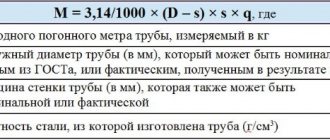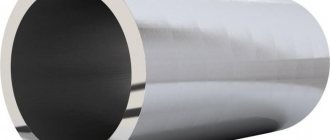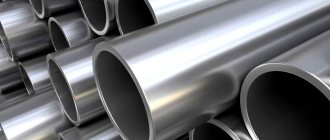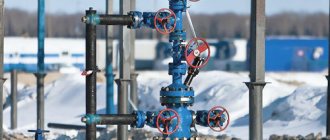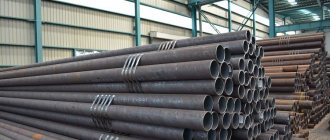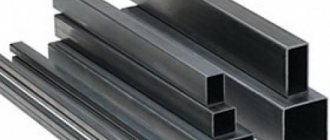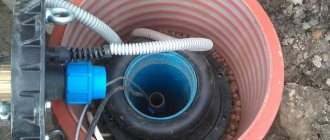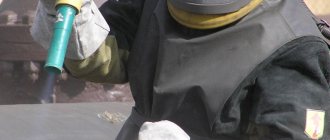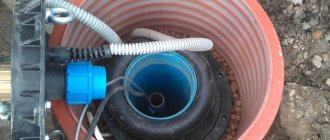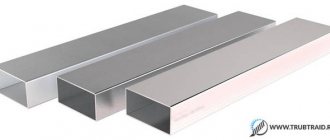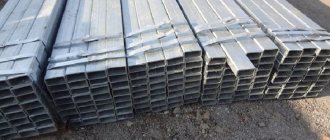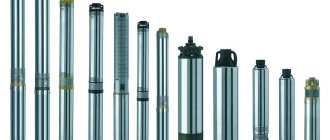Tubing is the basis of communications in the oil and gas industry. The functioning of the oil and gas industry, geological exploration and drilling of artesian wells is impossible without reliable specialized equipment. These products are used not only in the oil and gas industry, but also for supplying water from artesian wells and for transporting compressed air under pressure.
Tubing pipes are used in the oil and gas industry to transport aggressive media
Production
For the production of pump and compressor pipes, high-strength steel grades are used, which contain an increased amount of carbon. Steel 30ХМА is often used. The requirement is due to the need to protect the walls of pipelines from oxidation by chemically aggressive media and the extracted and distilled liquids and gases themselves.
The production of tubing pipes in Russia is regulated by GOST 633-80. The document defines several groups of these products:
- Tubing (standard) is a classic tube with a coupling connection. They ensure tightness of networks at internal pressure up to 50 MPa;
- NKT-V are pipes whose connecting threads are brought out (upset);
- NKB are pump-compressor tubes with external connecting threads, which are assembled into a pipeline without the use of a coupling;
- NKM – with a high-tightness coupling connection for particularly important areas and substances.
GOST determines the size, weight of the tubing pipe, necessary tests and other conditions of production, quality control and storage.
Pipeline capacity.
Such a characteristic as pipeline capacity depends on several factors.
First of all, this is the diameter of the pipe, as well as the type of liquid, and other indicators. For hydraulic pipeline calculations, you can use the hydraulic pipeline calculation calculator.
When calculating any systems based on the circulation of liquid through pipes, there is a need to accurately determine the pipe capacity . This is a metric value that characterizes the amount of liquid flowing through pipes over a certain period of time. This indicator is directly related to the material from which the pipes are made.
If we take, for example, plastic pipes, they have almost the same throughput throughout their entire service life. Plastic, unlike metal, is not prone to corrosion, so a gradual increase in deposits is not observed in it.
As for metal pipes, their capacity decreases year after year. Due to the appearance of rust, the material inside the pipes peels off. This leads to surface roughness and the formation of even more plaque. This process occurs especially quickly in hot water pipes.
The following is a table of approximate values, which was created to make it easier to determine the throughput of pipes in apartment wiring. This table does not take into account the reduction in throughput due to the appearance of sedimentary build-ups inside the pipe.
Characteristics
Basic requirements for tubing pipes:
- high resistance to aggressive environments that cause metal corrosion, as well as oxidation of transported media;
- resistance to low and high temperatures;
- plasticity is necessary for products to regulate the integrity of the line during heating/cooling and during internal pressure fluctuations. This parameter is ensured by the presence of plastic connections in different sections of the pipeline;
- absolute tightness;
- permeability of substances in the lumen of the pipe.
These qualities are regulated by various documents - GOST and individual specifications, which are available at each manufacturing enterprise.
The dimensions of the tubing pipe are specified in the assortment of the state standard:
- nominal diameter (external, rounded to the whole value) – 27...114 mm;
- length – 6...10 m (measured and unmeasured), can be adjusted according to customer needs.
Each product released from the conveyor has a mark from which you can find out all the defining characteristics: tubing pipe diameter, wall thickness, resistance value, grade or type of steel, name of the manufacturer.
Protection of the inner surface of the walls
A reliable way to prevent corrosion of 89x6 or 73x5 pipes is to apply a protective coating.
First, degreasing, shot blasting and dust removal are carried out. The already prepared inner surface is treated with a primer layer. After this, according to the technological process, the entire batch is sent to drying chambers. The task of this stage is to activate the graver. The final step is the application of epoxy powder paint.
Read also: Marketer as a profession
The final hardening of the protective layer occurs in the polymerization chamber. After this stage, the coating acquires an extremely smooth, almost glossy surface.
Important! This multi-stage technology guarantees the most effective protection against resin-paraffin deposits and minimizes the effects of salts.
The 89x6 pipe becomes three-layer:
- wall;
- primer;
- inner layer (protective).
In conventional samples, there is no middle layer: primer. This weakens performance.
The basic characteristic of a protective coating is elasticity. It becomes resistant to mechanical and chemical influences. Under the most extreme operating conditions, the elastic coating is not subject to deformation.
One of the most dangerous operational moments is the disconnection of the thread and the coupling (stripping).
Manual external thread cutting
Shear loads are potentially dangerous. It occurs when the threads are deformed. The protection prevents changes in geometric parameters at the point of threaded connection with the coupling.
Vitrification as a form of protection is also common.
The advantages of the protective coating are:
- High coefficient of resistance to torsion and bending.
- Resistance to the formation of cracks and fractures.
- Resistant to chipping and shock loads.
- Ecological cleanliness.
The advantages of using such samples are safe oil production. They reduce the percentage of emergency situations, and overall productivity increases. At the same time, the financing required for the oil industry is reduced by minimizing current operating costs.
Areas of use
Tubing pipes are used both for their intended and non-direct purposes. Initially they are intended for the oil industry:
- completion of oil and gas wells;
- bitumen extraction wells;
- injection pipelines.
The specifics of the application determined the pipe tubing material, which is distinguished by high performance indicators. Over time, the products began to be used for other purposes:
- arrangement of water pipelines in private and multi-apartment construction;
- use as supporting structures for installing foundations, fences and other vertical structures.
Screw piles of different load-bearing capacities are made from tubing by welding blades to the pipe.
Radioactivity
Let’s not ignore the radioactive safety of used tubing pipes. Our company purchases pipes only from fields belonging to the northern regions (Yamalo-Nenets Autonomous Okrug, Khanty-Mansi Autonomous Okrug). The advantages of such products are obvious:
- no wall wear;
- the aesthetics and durability of such products can be equated to new pipes.
But there is also a minus - a relatively high purchase price, as well as high transportation costs. But we know that the pipes we propose will not emit radiation, since oil fields located in the northern regions, as a rule, do not pose a radiation hazard.
Many companies producing fences offer posts made from tubing pipes brought from the southern regions (Samara, Tatarstan, Bashkiria). Such products are much lower in purchase and this is due to the wear and tear of the wall, as well as inexpensive delivery to the capital. But, recently, information has appeared that a batch of tubing pipes that were susceptible to radioactive contamination entered the market. Of course, such products should not enter the secondary market, since the continued use of such pipes is dangerous to life. It is also worth noting that they should not be transported outside the territory of the deposit, not to mention the region. But many turn a blind eye to this. Due to this feature, we carry out personal radio monitoring of pipes that arrive at our warehouse from the fields, so we can guarantee that our products are absolutely safe. If the buyer wishes, we can measure the radiation level in his presence.
The radiation indicator of tubing pipes offered by our company is 0.10-0.20 μ3v/h with a standard value of 0.40. Reliability, strength and durability, safety - all these characteristics are possessed by our fences made from posts purchased by us. If we take into account the quality of our products, as well as their cost, then you will not find a more advantageous offer than ours.
| Go to the selection of poles for the fence from tubing pipes |
Basic rules for installation and operation
The coupling connection is useful for assembling pipes in oil wells - lines and columns can be disassembled, moved, and repaired if necessary. For installation, different types of couplings are used:
- straight,
- branching.
Using such systems, you can get a highway of any shape.
For pipes not equipped with a threaded element, the only possible installation method is welding. They are most often used in civil engineering.
There are several rules to remember when choosing tubing pipes as a piping system in a house or as a pile:
- unloading of products must be carried out on a flat, pre-prepared area;
- to prevent sagging and maintain the evenness of the pipe, it is laid on wooden blocks laid transversely under the entire length of the product;
- Carrying products by drag is prohibited;
- before starting installation, it is necessary to go over the threads with a wire brush to remove dirt and possible corrosion products, while leaving a protective lubricant - it will help to make a quality connection;
- In no case should pipes be subjected to mechanical shock, for example, compaction or installation into the design position using a sledgehammer - this will easily damage the integrity of the wall and reduce the quality of the pipeline.
These rules apply to the use of tubing in any industry - both in industry and in civil engineering.
Operating principle of drilling rigs
To understand the purpose of tubing, you need to know the principle of operation of drilling rigs. Drilling rigs are used to extract water, gas and oil, which are located deep underground. They differ from each other in many parameters - operating principle, design, performance characteristics and others. Typically, a drilling rig consists of three elements - an aboveground platform, a drill string and a power system. The installation may also include additional elements - a controlling pneumatic drive, a drill cooling system, warning sensors, and so on.
Drilling technology
- At the preparatory stage, geologists conduct exploration and outline the proposed drilling location. Then the drilling platform is mounted and a test run of the installation is performed. During the test, the following parameters are checked: the quality of the joints of parts with each other, the level of vibration, and the level of load on the electric motor.
- If everything is fine with the platform, a well is drilled. For drilling, a drill string is used, which is connected to an electric motor. At the end of the column there is a sharp tip-chisel, which destroys hard rocks.
- During operation, the drill string rotates along its axis, which leads to the formation of a well. At the same time, the waste soil is supplied to the surface. Modern rigs are equipped with a system for supplying protective chemicals, which minimizes the risk of damage to the drill string.
- After creating a well, it is necessary to fix it. To solve this problem, two technologies can be used. In the first case, an additional pipe is installed in the well, which creates a gap between the column and the pipe itself. Soft mixtures are poured into this gap and quickly harden. In practice, this method is rarely used. In the second case, a casing pipeline is installed in the well, which has thick walls and can withstand any load.
- After strengthening the well, pipes are inserted into the casing to pump out minerals or water. Tubing can be used as such a pipe. Before they are introduced into the well, they are secured using well couplings, which turn the individual tubing pipes into a single compression string. To extract minerals, an electric motor is started, which pumps oil or gas from the well to the surface. On the drilling platform, minerals are packed into containers (barrels, tanks, vats).
Please note that tubing can be used in other scenarios. A simple example: a pipeline can be configured not to suck in liquids, but to spray them. This technology allows for the injection of liquids, which can be useful in some areas of human activity. Examples - well repair, geological exploration, local increase in pressure, creation of additional inflows to the main well.
Read also: What is an air conditioner in a sofa?
What electrodes should be used to weld a tubing pipe?
To connect pipes without a threaded connection, only welding is used. In this case, you can only use arc welding with coated electrodes under submerged arcs or in shielding gases, which will ensure high strength of the seam.
The problem is that for the manufacture of pipes they use medium and high alloy steel, which has high strength, density and refractoriness. Specialists select electrodes based on the characteristics of the metal and the climatic conditions of the area during the period of work. For private practice, you can choose the classic SSSI 13/45 or 13/55, the seam holds optimally and is enough for a long period of operation. However, in this matter, much depends on both the power of the device and the skill of the welder himself.
- Engineering Communication
- Foundation
Installation
The algorithm for using tubing is as follows. They are inserted into the drilled well, after the casing (fixed) pipes are inserted and also fixed with cement. For this, as well as for securing, packers are used. Products are divided into types depending on what kind of fluid needs to be pumped out. They can be used for completing: oil, bitumen, or gas wells; they are used for injection wells. If it is necessary to produce in one well from different horizons, pipe strings are installed. When designing them, it is important to consider that they must be quickly and safely installed, and also reinstalled if necessary. Today, developers are striving to equip wells with products that can perform various functions without complete removal/replacement.
Manufacturing and heat treatment process
Functions
All tubing is considered according to certain parameters: • supply of optimal flow and its highest surface pressure; • does the product withstand the entire period of well operation for corrosion resistance; • susceptibility to erosion on this term; • indicators of how well the tubing can withstand the loads that stimulation work leads to; • how great is the strength under an action such as tension.
An example of calculating pipeline capacity.
Pipeline length is an important indicator when calculating throughput. The length of the pipeline has a significant impact on throughput indicators. The greater the distance water travels, the less pressure it creates in the pipes, which means the flow speed decreases.
Here are some examples. Based on tables developed by engineers for these purposes.
Pipe capacity:
- 0.182 t/h with a diameter of 15 mm
- 0.65 t/h with pipe diameter 25 mm
- 4 t/h with a diameter of 50 mm
As can be seen from the examples given, a larger diameter increases the flow rate. If the diameter is doubled, the throughput will also increase. This dependence must be taken into account when installing any liquid system, be it plumbing, drainage or heat supply. This is especially true for heating systems, since in most cases they are closed, and the heat supply in the building depends on the uniform circulation of the liquid.
Source
